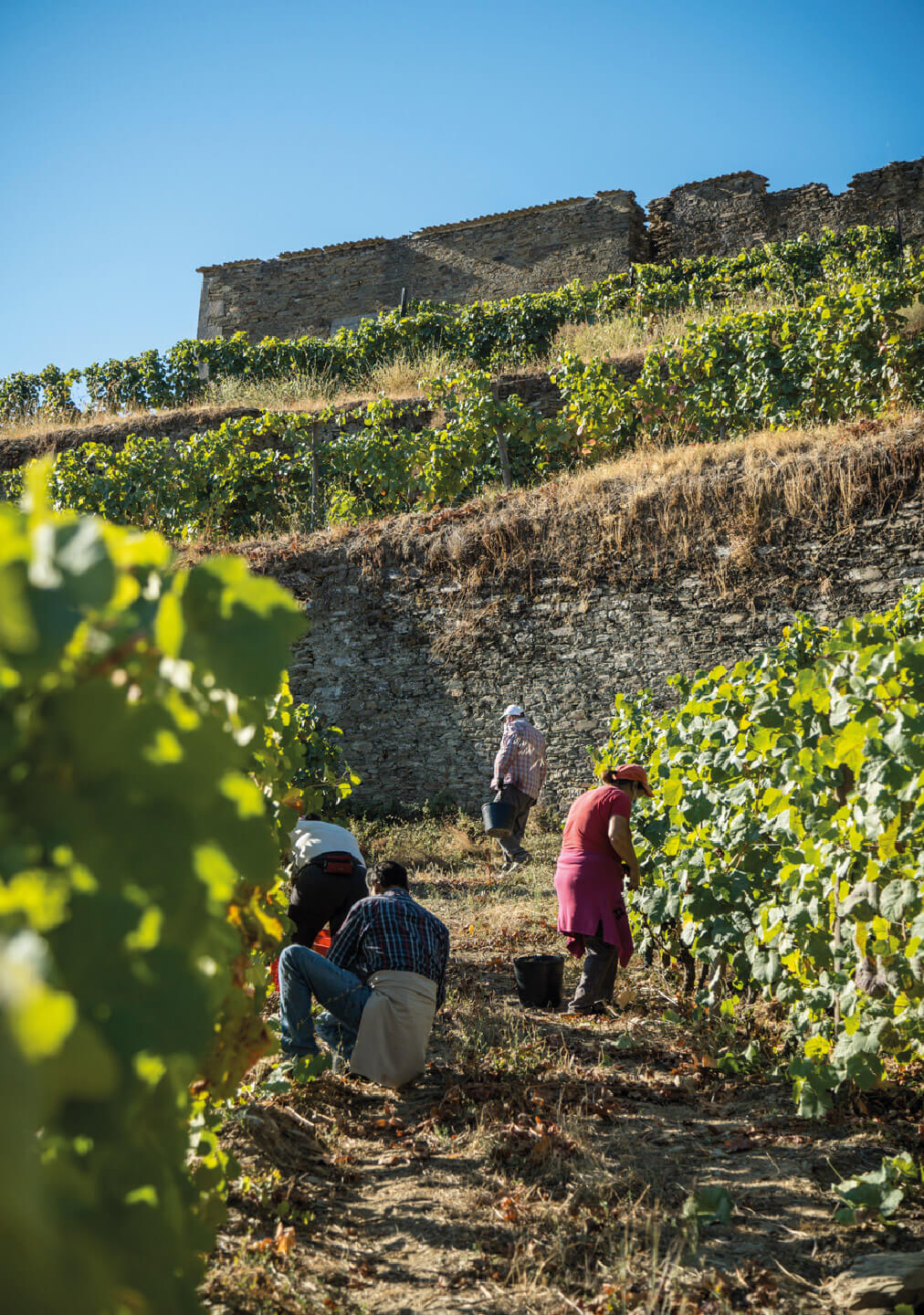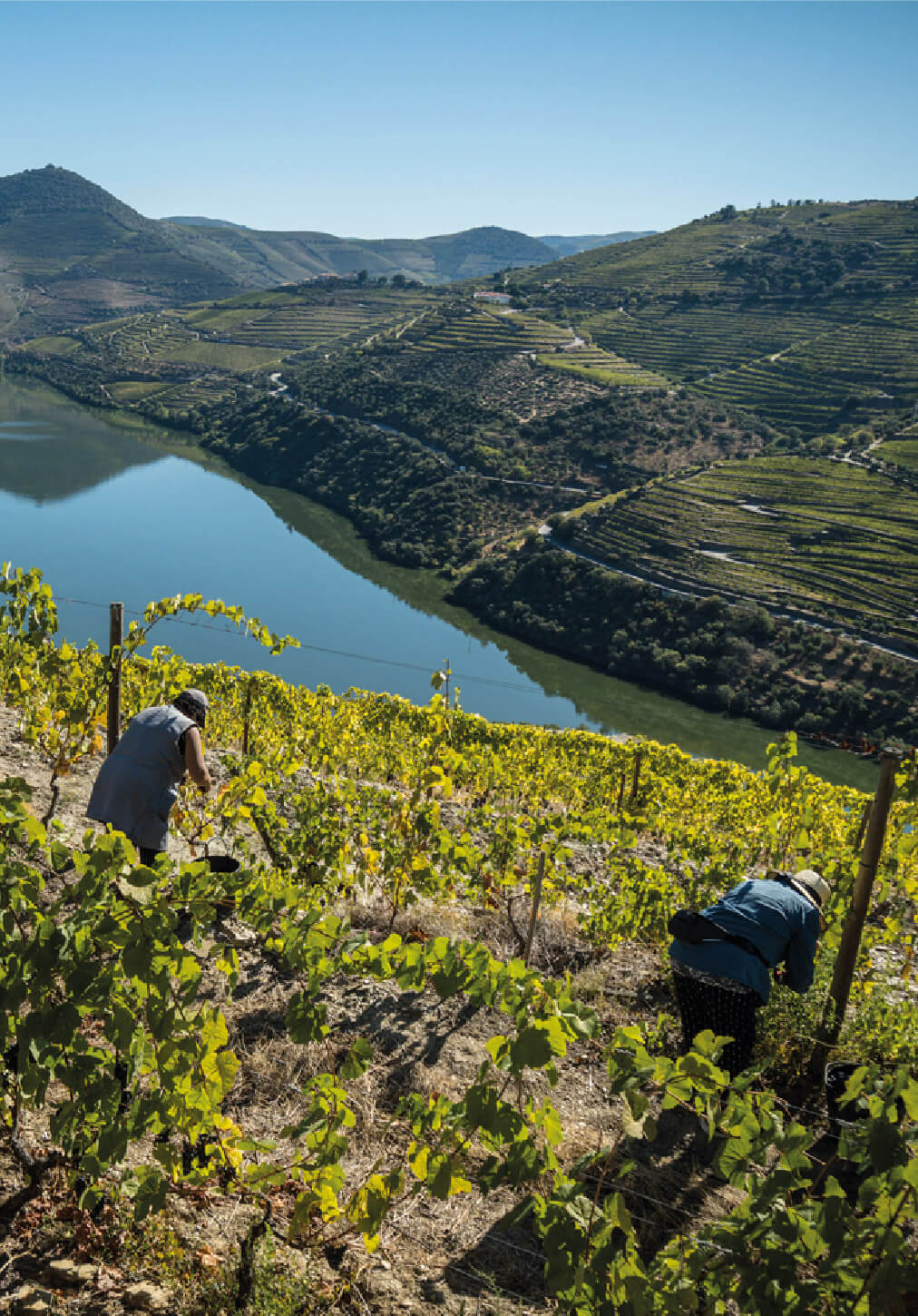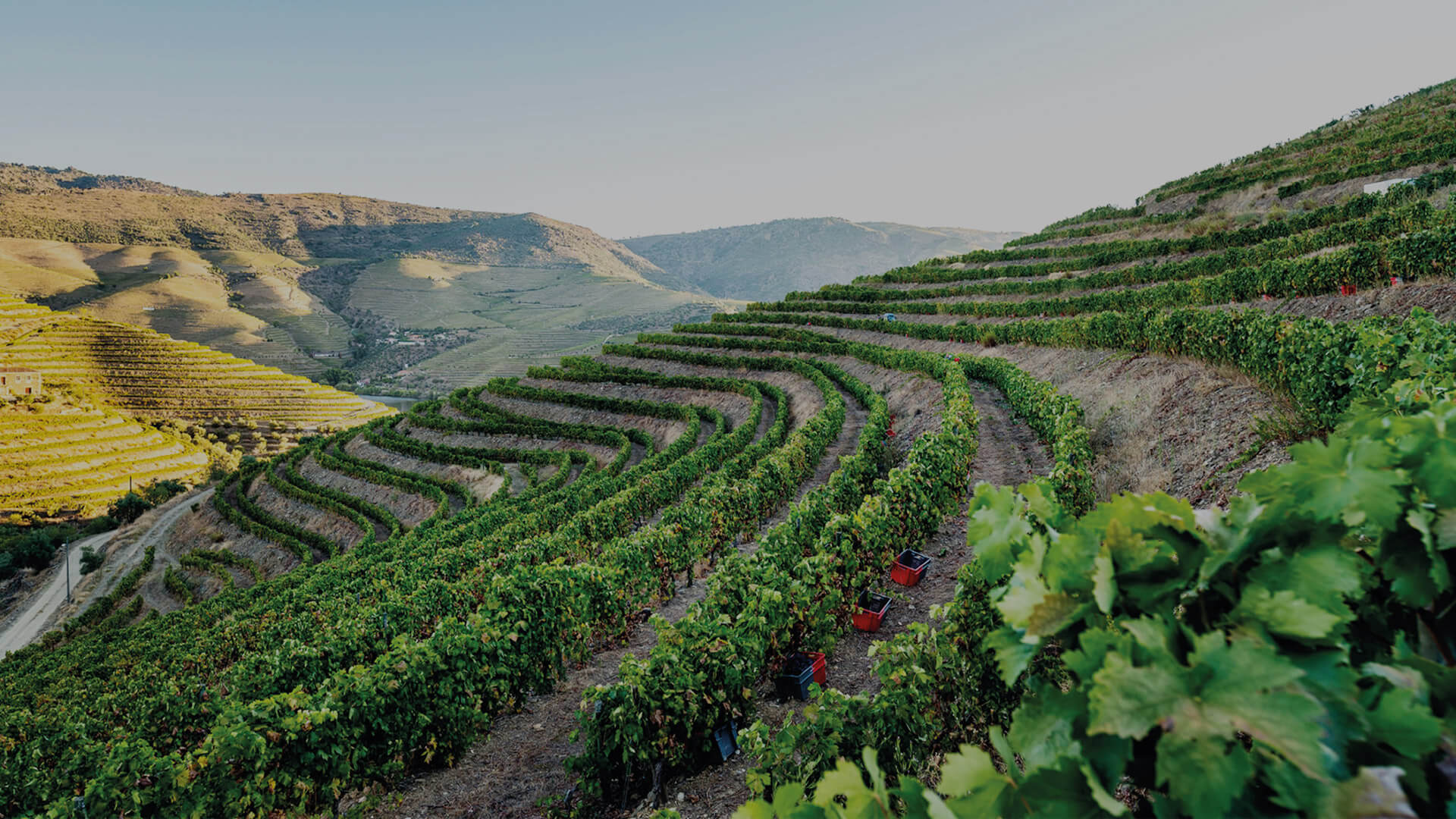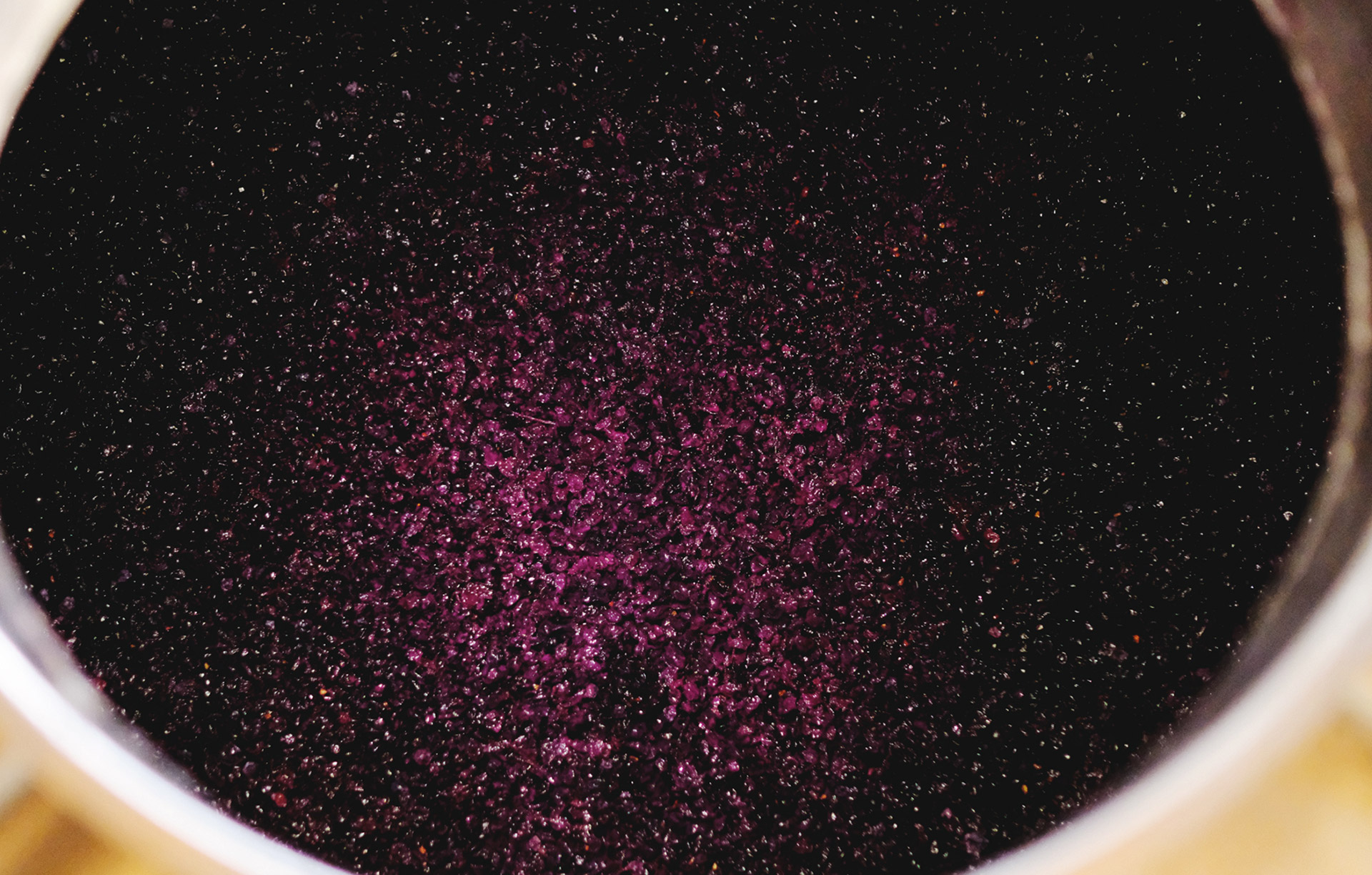

With the changes in climate becoming more intense, nature itself forced us to have a short and quick harvest. Our picking teams had to go through extended efforts to attend to the simultaneous ripening of varieties all over the region. The 2020 harvest brought a lower yield, which resulted in good quality musts, high sugar content, and good levels of acidity and phenolic compounds.
This year’s harvest was particularly challenging in terms of the efforts to preserve the grapes’ qualities and all their potential, both inside and outside of the winery.
Ricardo Macedo, winemaker of DOC wines at Sogevinus Fine Wines
The winter of the wine-growing season 2019/2020 was warm and dry. Spring started warm as well, with recorded rainfall levels slightly above average, especially in April and May, which replenished the soil water reserves, so vital for the healthy development of the vines.
But, whilst rainfall levels were considered normal for the region, the recorded temperatures were consistently above average. The region was hit by heat waves in June, August and September, with consistent registered maximum temperatures above the 30-year average, and July saw extraordinarily high temperatures too. The weather station at Quinta de São Luiz, in Cima-Corgo, showed the average temperature in July was 3.3º higher than normal. And according to IPMA (Instituto Português do Mar e da Atmosfera), the period from January to September 2020 was the in fact the warmest on record.
The vegetative cycle of the vines was two weeks ahead compared with the region’s average, and started with an onslaught of pests during the critical months of April and May, when weather conditions are more conducive to the spread of diseases.
The high temperatures at the beginning of the Summer triggered a series of natural responses in the vines, such as smaller numbers of bunches per plant and, from September onwards, dehydration. We knew early on that the 2020 harvest was going to be lower than the previous year’s.
We began the harvest in August, in dry weather and moderate temperatures which benefited gradual ripening. But by September, the grapes were ripening fast and we had to adapt the logistics of the grape-picking teams to ensure the grapes arrived to the wineries in the best possible conditions and optimum health.
“Douro’s orography and its diversity of soils, exposures and altitudes, together with the selection of the most resilient native varieties and the use of sustainable practices in the vineyards (such as canopy management and ecological corridors) enables us to be prepared to face the increasing climate changes”, said Márcio Nóbrega, Head of Viticulture at Sogevinus Fine Wines. “The current advances in precision viticulture and the use of new techniques in pest control and in the protection of biodiversity are important factors that year after year allow us to harvest grapes of the highest quality despite all these adversities”, he added.



As the winter approaches white wines begin to reveal their qualities whereas the red are at the end of their malolactic fermentation. We are seeing wines with excellent structure, aromatic and very fresh, which are good hints of great ageing potential. A promising future for the 2020 harvest wines
Ricardo Macedo, winemaker of DOC wines at Sogevinus Fine Wines
“With a short ripening window (compared to previous years) in most varieties, the attention to detail in each plot, constant follow-up of maturation situation and quick decisions as to when to pick were decisive for us to obtain wines with great quality potential”, explained Ricardo Macedo, tthe winemaker of DOC Douro still wines at Sogevinus Fine Wines. “Given the quick dehydration of the grapes, it was important to have extra care when receiving the grapes in the winery, as well as in their selection and vinification”, he added.
The accelerated ripening of the grapes in August, which happened at the same time all over the three Douro subregions, set in motion an unusually early harvest. Its success would largely depend on the planning of priorities based on the type of wine and quality to achieve. Therefore, it was essential to determine the amount of grapes to pick per day, establish transport needs and define the most adequate type of vinification. Under these circumstances, the cold chamber recently acquired for the winery at Quinta de São Luiz was essential when receiving and selecting the grapes. “This year’s harvest was particularly challenging in terms of the efforts to preserve the grapes’ qualities and all their potential, both inside and outside of the winery”, explained Ricardo Macedo.
This harvest’s red wines show good body and colour and excellent freshness. The levels of alcohol were a fraction higher than last year’s, leading to very balanced wines with good tannins, and remarkably smooth and creamy, which forebodes high quality in production.
As far as red varieties are concerned, the Touriga Nacional has come out fresh and aromatic, with notes of orange blossom and violet, extremely delicate and elegant on the palate. Tinta Roriz is particularly mineral, with excellent acidity and notes of fresh fruit. The Sousão variety shows depth of colour, good body and is extremely velvety in the mouth. We must highlight the Touriga Franca which, through the impact of heat and low water level in the soil, has performed really well, with smaller grapes than normal and lower yield per vine. The results are wines with a vibrant colour, good structure, strong body and a bouquet of fruity and floral notes that evoke blackberries and rosebuds.
As a last note, our distinctive and Old Vines from Quinta de São Luiz and Quinta da Boavista brought us vivid-coloured wines with a unique character. The wines are balanced, fresh and with excellent structure.

As for the white wines, we are mostly getting fresh and fruity wines with good palate. The wines from higher elevations combine fruitiness with good acidity, the outcome of a prompt and surgical picking according to the ripening stage of the grapes.
From the white varieties, the Folgazão is showing a stronger structure than usual, with excellent complexity of aromas, freshness and the expected characteristic elegance. In the Viosinho we find a perfect balance between sugar and acidity, which makes for structured, full-bodied wines, with good alcohol content, quite floral and with subtle notes of aniseed and peach. The Malvasia Fina shows notes of tropical fruit, with hints of passion-fruit and pineapple. The Gouveio variety stands out for its structure and complexity, with notes of fresh fruit (not too-ripe apricot). The Fernão Pires is showing a rich structure and strong aromas: citrus (orange) and hints of lime tree blossom. From vines at 500m altitude, the Arinto was one of the last white varieties to be picked, and its wines are displaying excellent acidity and minerality, which highlight notes of fresh fruit: green apple, lemon and a few hints of passion-fruit, not so evident this year.
“As the winter approaches white wines begin to reveal their qualities whereas the red are at the end of their malolactic fermentation. We are seeing wines with excellent structure, aromatic and very fresh, which are good hints of great ageing potential. A promising future for the 2020 harvest wines”, concludes Ricardo Macedo.

The harvest of 2020 will be remembered for its setbacks, making it one of the most challenging in my life as a winemaker. But this short and early harvest has supplanted all expectations and we believe it will be possible it will bring wines of excellent quality.
Carlos Alves, Sogevinus’ Port winemaker and master blender
When it comes to Port wines, the red musts are showing high concentration of sugars and excellent depth of colour, with remarkably clean flavours and aromas. The white musts, on the other hand, display aromas of fresh tropical fruit, full-bodied and long.
The red Port varieties with the best performance are the Touriga Nacional, Tinto Cão and Sousão. And the white Port varieties that stand out are Viosinho, Arinto and Malvasia Fina.
“We now look forward to the harsh winters of the Douro so that the wines may reveal their full potential, but I dare say we have excellent Ports in our cellars that promise great ageing”, said Carlos Alves, Sogevinus’ Port winemaker. “The harvest of 2020 will be remembered for its setbacks, making it one of the most challenging in my life as a winemaker. But this short and early harvest has supplanted all expectations and we believe it will be possible it will bring wines of excellent quality”, concluded the winemaker.